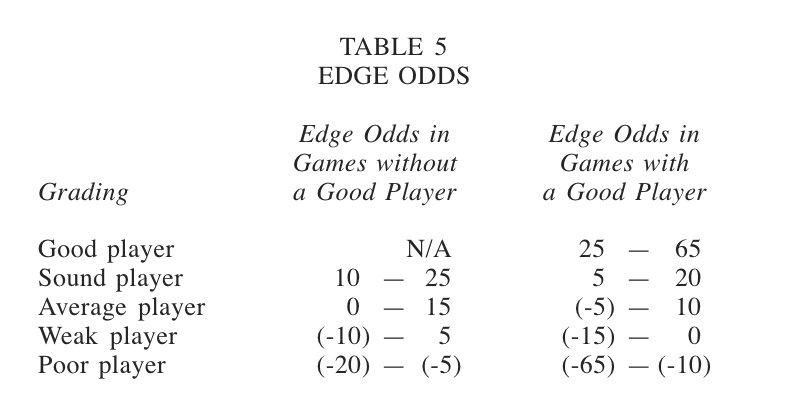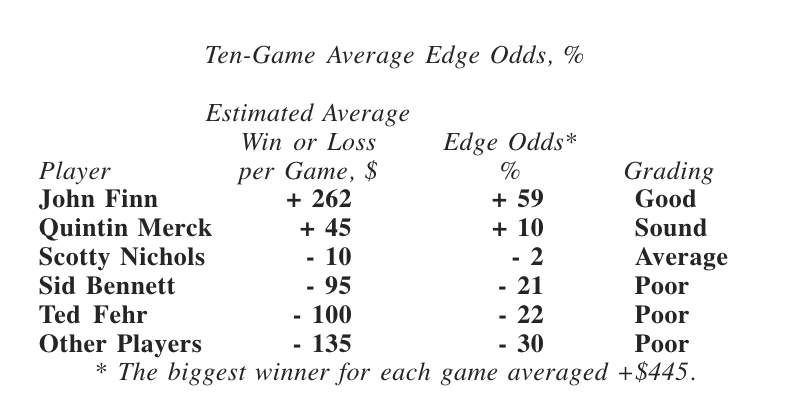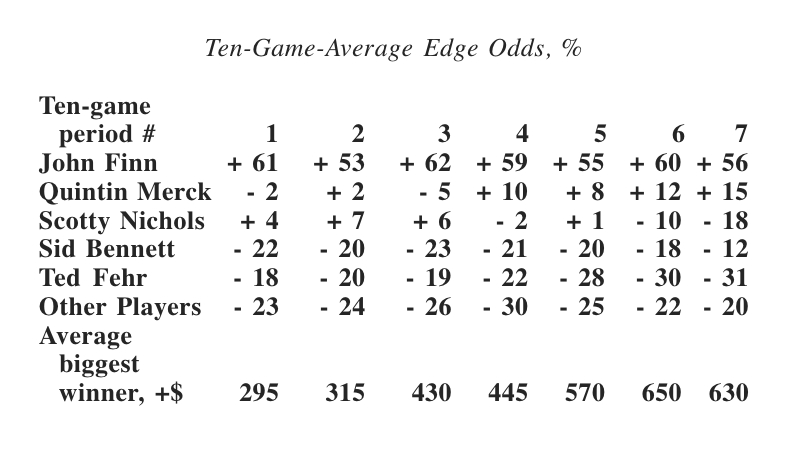Edge Odds
3. Edge Odds or Edge Percentages
Edge odds indicate the relative performance of a player in a poker game. These odds are calculated by the following formula:

For example, if the biggest winner of each game averages plus $150, and if a player averages plus $75 per game, then the edge odds for this player are +75/150 x 100% = +50%. The more games used to calculate edge odds, the more significant they become. Edge odds based on ten or more games should reflect the relative performance of a player fairly accurately. The good poker player usually maintains edge odds ranging from 25 percent to 65 percent, depending on the game and abilities of the other players. An approximate performance grading of poker players based on the edge odds is tabulated in Table 5.
_______________________
10 If you are not mathematically inclined and do not understand this or other formulas and ratios presented in this chapter, do not worry. Just skip over the formulas and read on. For these formulas are not necessary to understand and utilize the concepts identified in this course.

Edge odds are estimated for an average seven-man game.
The good player is a very expensive person to have in a poker game, as indicated by the sharp decreases in everyone’s edge odds when he plays.
In a black leather notebook, John Finn keeps records of every player. After each game, he estimates their winnings and losses. After every ten games, he calculates their edge odds, as shown below:

By reviewing his long-term edge-odds data (shown below), John notices slow changes in the players: Quintin is gradually improving, Scotty and Ted are deteriorating. while Sid remains stable.

The steady increase in profit for the biggest winner also reflects John Finn’s progress in driving up the betting stakes and pace.